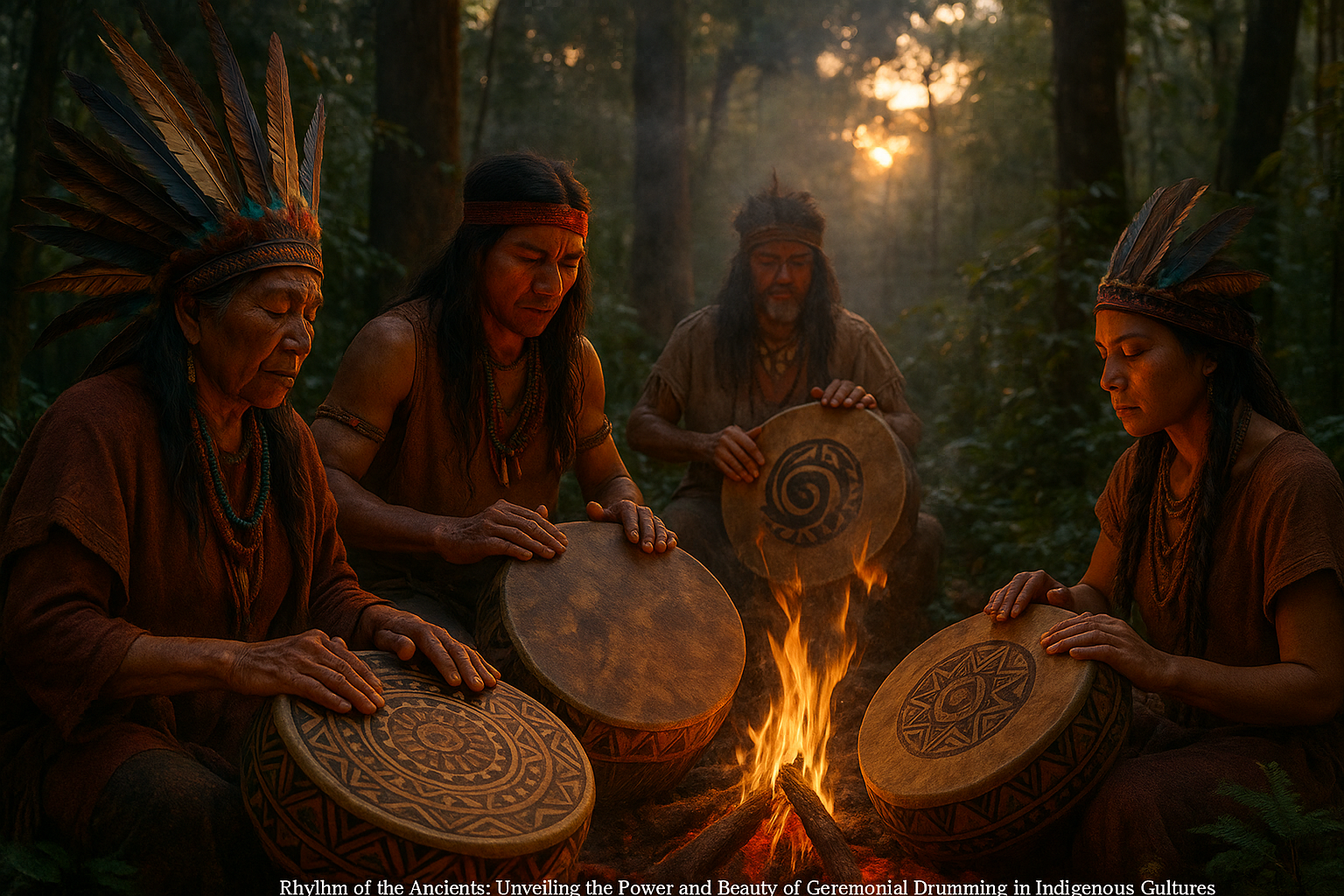In the tranquil embrace of a serene morning, as the first rays of sunlight gently pierce through the canopy, the world awakens to a symphony that has played for eons—birdsong. This natural orchestra, with its myriad melodies and rhythms, has the power to inspire wonder, evoke memories, and connect us to the wild tapestry of life that surrounds us. Yet, as we rush through our bustling lives, these musical offerings often become mere background noise, overshadowed by the cacophony of human activity. But what if we paused for a moment? What if we truly listened and began to understand the profound stories and secrets woven into these avian arias? 🌿
Welcome to our exploration of the symphony of nature, a journey into the heart of birdsong, where each note and trill carries meaning and purpose. In this article, we embark on an ambitious mission: to catalog birdsong by habitat, unraveling the complex relationships between birds, their environments, and the songs they sing. This exploration is not just an academic endeavor but a heartfelt invitation to reconnect with nature in its purest form. By understanding these vibrant soundscapes, we not only deepen our appreciation of the natural world but also gain valuable insights into the health of our ecosystems and the changes they face.
Our journey begins with an exploration of diverse habitats—from lush rainforests and arid deserts to bustling urban areas and tranquil wetlands. Each habitat hosts a unique chorus, reflecting the diversity of life that thrives within it. We will delve into the characteristics of these environments, exploring how they shape the songs of their avian inhabitants. What is it about the dense foliage of a rainforest that inspires such intricate melodies? How do the open skies of grasslands influence the calls of their feathered residents? Through this exploration, we aim to highlight the remarkable adaptability of birds and the intricate ways they have evolved to communicate within their specific ecological niches.
But our exploration does not stop at understanding habitats. We will delve into the science of birdsong itself—how it is produced, its purpose, and its variations. Birdsong serves multiple roles: attracting mates, defending territories, and even warning of danger. We will examine how these roles manifest across different species and environments, and how technological advancements are aiding researchers in deciphering these complex vocalizations. Through the use of bioacoustics and machine learning, scientists are beginning to unlock patterns and meanings in birdsong that were once beyond our grasp. This emerging field not only enriches our understanding of avian life but also opens up new possibilities for conservation efforts, allowing us to monitor ecosystems with unprecedented precision.
Finally, we will consider the broader implications of cataloging birdsong for a harmonious world. In an era marked by environmental change and biodiversity loss, these natural symphonies serve as both a reminder of what is at stake and a call to action. Birdsong is more than just an auditory delight; it is a vital indicator of ecological health. By preserving these soundscapes, we contribute to the conservation of the habitats that support them, fostering a world where both humans and nature can thrive. Join us as we uncover the intricate beauty of birdsong, and discover how these avian melodies can guide us toward a more harmonious existence with the natural world. 🎶
Introduction to the Symphony of Nature
The symphony of nature is an enchanting concept that embraces the myriad sounds produced by the natural world. At the forefront of this symphony is the captivating soundscape of birdsong. Birdsong is not just a simple melody; it is a complex form of communication that varies widely among different species and habitats. Each habitat, from lush forests to arid deserts, offers a unique acoustic environment where birds have adapted their songs to communicate effectively. Understanding and cataloging birdsong by habitat can provide insights into the behaviors, adaptations, and environmental challenges faced by bird species across the globe.
Birdsong serves multiple purposes, including mate attraction, territory defense, and signaling alarm. Each of these functions is essential for survival and reproduction. The complexity of birdsong can often be attributed to the specific needs of the species and the characteristics of their habitat. For instance, in dense forests, birds may use songs with higher frequencies that travel better through thick foliage. Meanwhile, birds in open grasslands may rely on songs with lower frequencies that can travel long distances. Exploring these variations in birdsong opens a window into the evolutionary pressures that shape communication in the avian world.
Moreover, cataloging birdsong by habitat is crucial for conservation efforts. As habitats face increasing threats from climate change and human activity, understanding how these changes impact birdsong can help identify species at risk. By preserving the unique soundscapes of different habitats, we can ensure that future generations will continue to experience the rich tapestry of nature’s symphony. This article delves into the fascinating world of birdsong, examining how different habitats influence the acoustic characteristics of bird communication and what this means for biodiversity and conservation.
The Science Behind Birdsong
Birdsong is a complex behavior that has been the subject of extensive scientific research. Ornithologists and ecologists have studied the intricacies of birdsong to understand its role in avian life and its response to environmental changes. Birds produce song using a specialized vocal organ called the syrinx, which allows them to create a wide range of sounds. The structure of the syrinx and the accompanying respiratory mechanisms enable birds to produce both simple calls and elaborate songs.
Each bird species has a distinct song repertoire, often consisting of a series of notes or phrases that can be combined in various ways. These songs are not static; they can evolve and change over time in response to environmental factors and social interactions. For instance, young birds learn songs by listening to adults, a process known as vocal learning. This learning process can lead to regional variations in birdsong, similar to dialects in human language. In some cases, birds may even mimic sounds from their environment, such as the calls of other species or even man-made noises.
Researchers use various methods to study birdsong, including field recordings, spectrogram analysis, and playback experiments. These techniques allow scientists to analyze the frequency, duration, and complexity of bird songs. By comparing songs from different habitats, researchers can identify patterns and adaptations unique to specific environments. This data is crucial for understanding how birds communicate and how they may respond to changes in their habitats.
Comparative Analysis of Birdsong by Habitat
The diversity of habitats across the globe leads to a wide array of birdsong adaptations. To illustrate these differences, consider the following table, which highlights key characteristics of birdsong in different habitats:
| Habitat | Characteristics of Birdsong | Example Species |
|---|---|---|
| Forest | High-frequency songs, short notes to avoid echo, complex song patterns. | Wood Thrush, Ovenbird |
| Grassland | Low-frequency, long-distance calls, simple repetitive patterns. | Eastern Meadowlark, Savannah Sparrow |
| Desert | Short, rapid calls, adapted to minimize water loss during vocalization. | Cactus Wren, Greater Roadrunner |
| Wetland | Varied frequency to penetrate dense reeds and open water, complex duets. | Marsh Wren, Swamp Sparrow |
Each of these habitats imposes unique challenges and opportunities for birds, influencing how they develop and use their songs. Forest birds often face the challenge of dense vegetation, which can absorb sound and create echoes. As a result, they may develop songs with higher frequencies that cut through the foliage. In contrast, grassland birds can afford longer calls that travel across open spaces, allowing them to communicate over greater distances. Desert birds, meanwhile, face the challenge of conserving water, which affects their vocalizations, leading to short and rapid calls.
Technological Advances in Birdsong Cataloging
The advent of modern technology has revolutionized the way we study and catalog birdsong. Advances in audio recording equipment, data analysis software, and machine learning algorithms have enabled researchers to collect and analyze birdsong data more efficiently and accurately than ever before. These technological tools have opened new avenues for understanding the complexity of birdsong and its relationship with different habitats.
Field recording equipment has become increasingly portable and sophisticated, allowing researchers to capture high-quality audio data in remote locations. These recordings can then be analyzed using spectrograms, which provide a visual representation of the sound frequencies and patterns within a song. This visual data can be used to identify specific characteristics of birdsong and compare them across different habitats.
Machine learning algorithms have also played a pivotal role in birdsong research. These algorithms can process large datasets to identify patterns and classify songs based on species and habitat. By training machine learning models on labeled datasets, researchers can automate the process of identifying and cataloging birdsong. This automation is particularly valuable for large-scale studies that require analyzing thousands of hours of audio data. The use of technology in birdsong research not only enhances our understanding of avian communication but also aids in conservation efforts by providing insights into habitat health and species diversity.
Applications of Birdsong Data
Birdsong data has numerous applications that extend beyond scientific research. Here are some of the key uses of this valuable information:
- Conservation Efforts: By monitoring changes in birdsong, researchers can assess the impact of habitat loss and climate change on bird populations. This data is essential for developing effective conservation strategies.
- Ecotourism: Birdsong recordings can enhance ecotourism experiences by providing visitors with an immersive understanding of the local avian biodiversity. Audio guides featuring birdsong can enrich tours of nature reserves and national parks.
- Public Education: Birdsong data can be used in educational programs to raise awareness about the importance of preserving natural habitats. Schools and community organizations can use birdsong recordings to engage audiences and inspire interest in conservation.
- Citizen Science: With the rise of citizen science projects, bird enthusiasts and volunteers can contribute to birdsong databases by recording and submitting local bird calls. This collaborative effort expands the scope of research and data collection.
Watch the video below for an in-depth look at how technology is being used to study birdsong and its implications for conservation: Understanding Birdsong: Technology and Conservation (National Geographic Channel).
Challenges and Future Directions
While significant progress has been made in cataloging and understanding birdsong, several challenges remain. One of the primary challenges is the sheer diversity and variability of birdsong across different species and habitats. This variability can make it difficult to develop standardized methods for recording and analyzing birdsong. Additionally, the rapid pace of habitat loss and climate change poses an urgent threat to bird populations, potentially leading to the extinction of species before their songs are fully documented.
To address these challenges, future research must continue to innovate and adapt. Collaboration between scientists, conservationists, and technologists will be essential for developing new methods and tools for studying birdsong. Interdisciplinary approaches that combine biology, computer science, and environmental science will be crucial for advancing our understanding of avian communication and its ecological significance.
Furthermore, engaging the public in birdsong research through citizen science initiatives can significantly expand the scope and impact of data collection efforts. By involving local communities and bird enthusiasts, researchers can gather valuable data from a wider range of habitats and regions. This collaborative approach not only enhances the research but also fosters a greater appreciation for the natural world and the importance of conservation.
The Role of Policy and Advocacy
Policy and advocacy play critical roles in ensuring the protection of bird habitats and the preservation of their unique soundscapes. Governments and environmental organizations must prioritize the conservation of critical habitats and implement policies that mitigate the impacts of climate change and habitat destruction. By advocating for stronger environmental protections and sustainable land-use practices, we can create a more harmonious world where birdsong continues to thrive.
Moreover, international cooperation is essential for addressing the global challenges facing bird populations. Migratory birds, in particular, rely on a network of habitats across different countries and continents. Coordinated efforts to protect these migratory pathways and ensure the availability of suitable habitats are vital for the survival of these species.
The journey to catalog and preserve the symphony of nature is ongoing, and the work of dedicated researchers, conservationists, and advocates is crucial for ensuring that birdsong continues to be a vibrant and integral part of our world. By understanding and appreciating the rich diversity of birdsong, we can take meaningful steps toward creating a more sustainable and harmonious future for all life on Earth.

Conclusion
Conclusion: Discover the Symphony of Nature: Cataloging Birdsong by Habitat for a Harmonious World
In our exploration of the magnificent symphony of nature, we have embarked on a journey to understand the importance and the rich complexities of birdsong. By cataloging birdsong by habitat, we have uncovered a profound connection between avian life and their environments, shedding light on the intrinsic value these melodious sounds hold for ecosystems and human culture alike.
Throughout this article, we delved into the scientific, ecological, and cultural significance of birdsong. We discussed how each habitat, from lush forests to expansive wetlands, hosts a unique orchestra of bird calls that contribute to the biodiversity and health of our planet. Birds use their songs to communicate, establish territories, and attract mates, making these vocalizations essential for their survival and the continuity of their species.
We also explored the role of technology in preserving and cataloging birdsong. With advancements in audio recording and data analysis, researchers are now able to capture and analyze bird calls with unprecedented accuracy. This data is crucial for conservation efforts, allowing scientists to monitor bird populations and understand the impacts of environmental changes and habitat loss. Furthermore, this information can aid in creating more effective conservation strategies, ensuring that future generations can continue to experience the beauty of birdsong.
The cultural resonance of birdsong was another pivotal point. Birds have inspired countless artistic expressions, from music and literature to visual arts. Their songs are woven into the fabric of human culture, symbolizing freedom, hope, and the beauty of the natural world. By preserving these sounds, we are also preserving a vital part of our cultural heritage.
Moreover, we highlighted the emotional and psychological benefits that birdsong provides to humans. Studies have shown that listening to birdsong can reduce stress, enhance mood, and improve mental well-being. In an increasingly urbanized world, where natural sounds are often drowned out by the noise of modern life, birdsong offers a serene escape and a reminder of nature’s tranquility.
The urgency of conservation efforts was emphasized, noting the threats posed by habitat destruction, climate change, and pollution. These challenges endanger not only bird populations but also the ecosystems that rely on them. By cataloging birdsong, we can advocate for the protection of natural habitats and promote biodiversity conservation, fostering a more harmonious coexistence between humans and nature.
In conclusion, the symphony of nature embodied in birdsong is a treasure that deserves our attention and care. By understanding and preserving these sounds, we are taking vital steps towards a more sustainable and harmonious world. We invite you to engage with this symphony, whether by participating in local birdwatching events, supporting conservation organizations, or simply taking a moment to listen to the birds in your area.
Your involvement matters. Share this article with friends and family, spark discussions, and encourage others to appreciate and protect the natural world around us. Together, we can ensure that the melody of birdsong continues to inspire and uplift for generations to come.
For further reading and exploration of the topics discussed, we recommend visiting Cornell Lab of Ornithology and Xeno-canto, both of which offer extensive resources and audio libraries dedicated to birdsong research and conservation. 🌿🎶
Toni Santos is a sensory storyteller and soundscape artisan whose work explores the forgotten language of the Earth through acoustic ecology storytelling. With a deep reverence for the natural world’s sonic textures, Toni crafts narratives that awaken our ears to the subtle music of forests, winds, waters, and wild silence.
His creative journey is rooted in a desire to preserve and interpret the acoustic heritage of environments, both ancient and fragile. From the echo of birdsong in a disappearing jungle to the resonance of stones in sacred landscapes, Toni’s stories reflect the memory held in sound—often overlooked, yet deeply felt.
With a background in environmental aesthetics and sonic design, Toni blends field recordings, visual symbolism, and poetic insight to create immersive experiences that honor the sonic soul of nature. His work does more than document; it invites listeners to re-tune themselves to the rhythms of life that still pulse beneath modern noise.
As the voice behind Vizovex, Toni shares sound-based studies, ambient narratives, and reflective content that help others reconnect with how sound shapes memory, meaning, and place.
His work is a tribute to:
The lost soundscapes of vanishing ecosystems
The role of natural acoustics in cultural and emotional memory
The healing potential of listening deeply to the world
Whether you’re an artist, an ecologist, or someone drawn to the quiet power of listening, Toni invites you into a space where every rustle, ripple, and resonance becomes a story—one note, one place, one heartbeat at a time.





